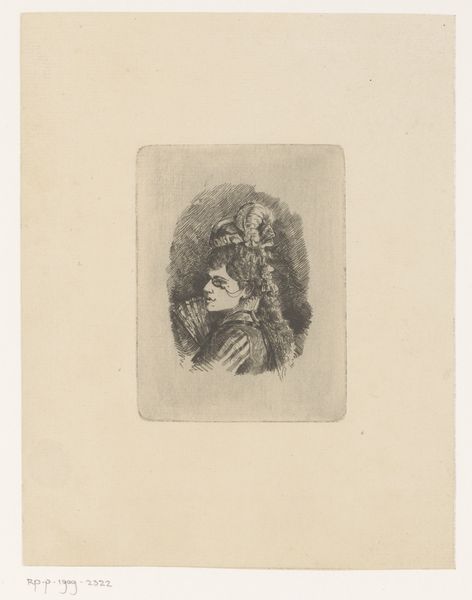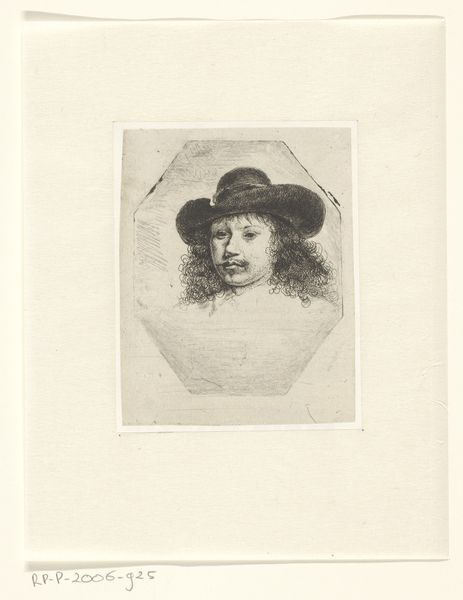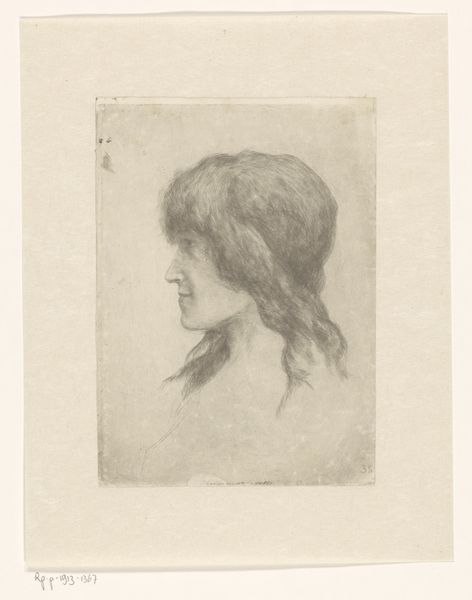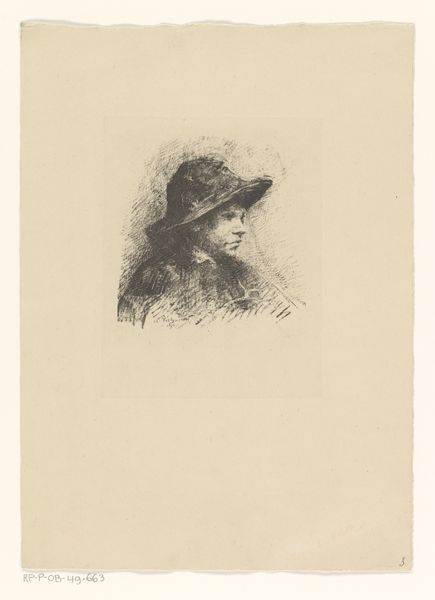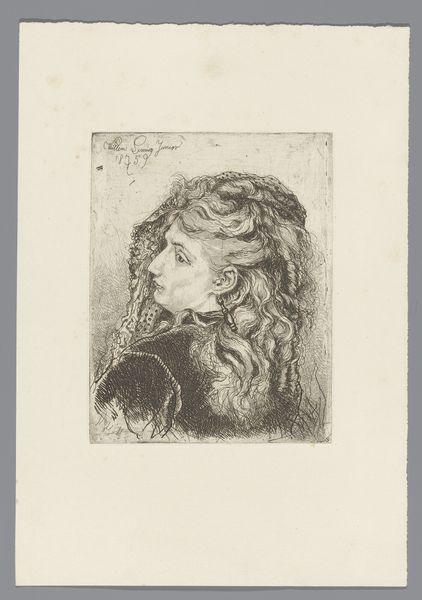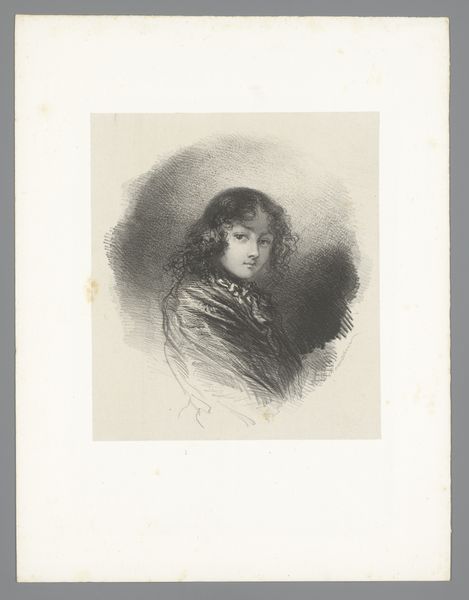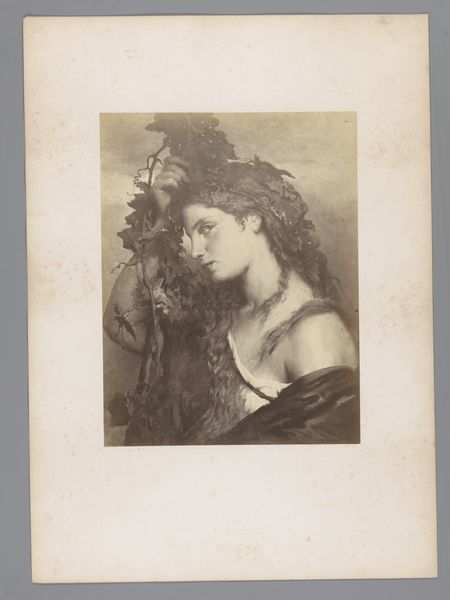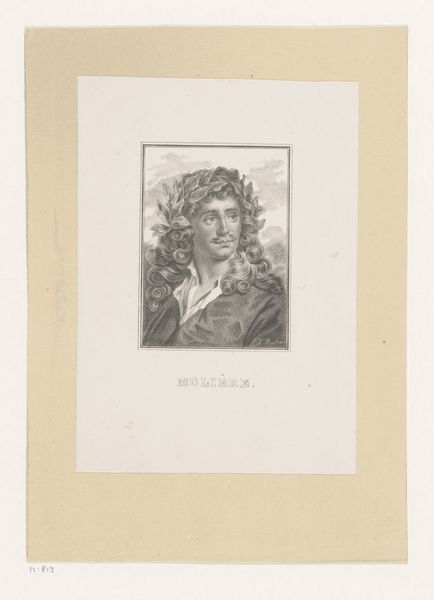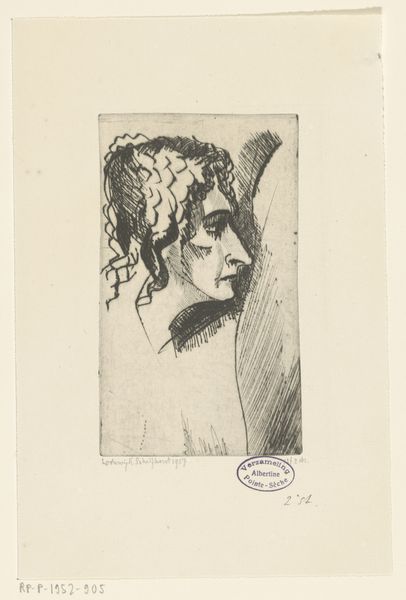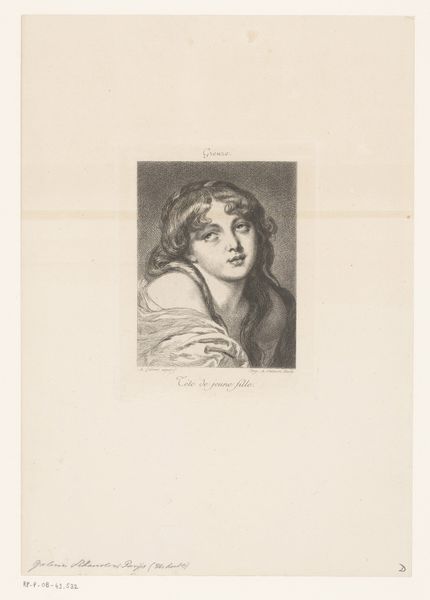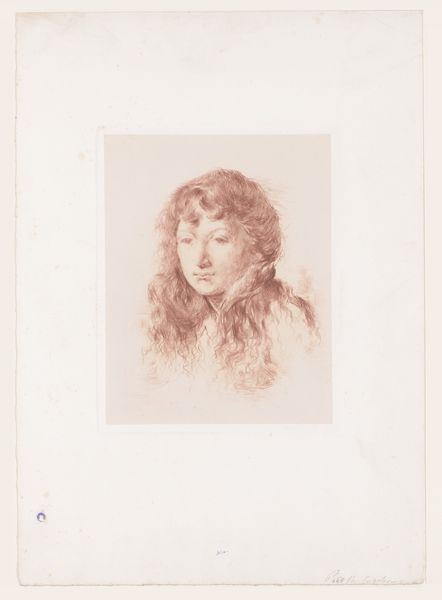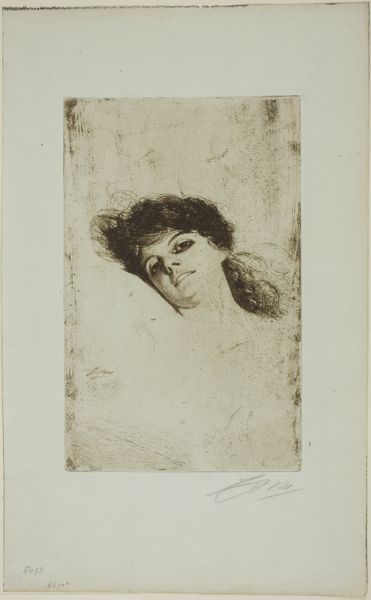
#
portrait
#
pencil drawn
#
photo of handprinted image
#
light pencil work
#
photo restoration
#
pencil sketch
#
light coloured
#
pencil drawing
#
portrait drawing
#
tonal art
#
remaining negative space
Dimensions: height 178 mm, width 118 mm
Copyright: Rijks Museum: Open Domain
Curator: Standing here, we're observing Jules de Goncourt's "Portret van Constance Mayer," created around 1860, currently held in the Rijksmuseum collection. Editor: What strikes me first is the fragility of the image. It feels delicate, almost ephemeral, with the light pencil work and the significant negative space. Curator: It's more than just a drawing; it is a cultural artifact reflecting the role of women artists like Constance Mayer. While celebrated in her time, her legacy faded somewhat, a fate too common for female artists. Goncourt’s choice to depict her helps, in a way, keep her visible within the art world. Editor: Absolutely. Looking at the cross-hatching, especially around the face and hat, it creates this wonderful sense of depth and shadow. There’s a clear intention to capture not just her likeness, but also her personality, maybe a touch of melancholy even? Curator: Indeed, portraits served a crucial function. They cemented social standing, marked historical moments, and contributed significantly to cultural narratives, acting as visual testaments that influence perceptions even now. The way the portraits circulated shaped and maintained power dynamics. Editor: You see that play of light and shadow particularly emphasized by leaving the lower area unresolved. It almost elevates her out of a concrete space and time. Curator: And beyond the aesthetic qualities, portraits like this helped shape social memory, creating ideals and notions of beauty and status that influenced broader cultural attitudes of that era, setting standards, particularly in a print as accessible as this one. Editor: I am so moved by how the sketch's vulnerability allows you to really engage with the subject’s expression—it really invites introspection. Curator: It’s important to see artworks like this portrait of Mayer as visual echoes resonating through art history and prompting dialogue about artistic representation, gender, and cultural visibility. Editor: Precisely; through careful lines, this work achieves such subtle power and allows a surprising intimacy, while inviting speculation. Curator: Viewing this artwork with an appreciation for both its artistry and its historical implications definitely enriches our understanding. Editor: Yes, this balance between aesthetic value and context can reshape and deepen the conversation with art.
Comments
No comments
Be the first to comment and join the conversation on the ultimate creative platform.
